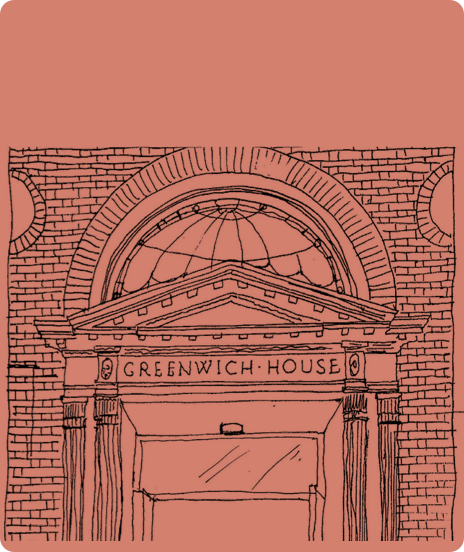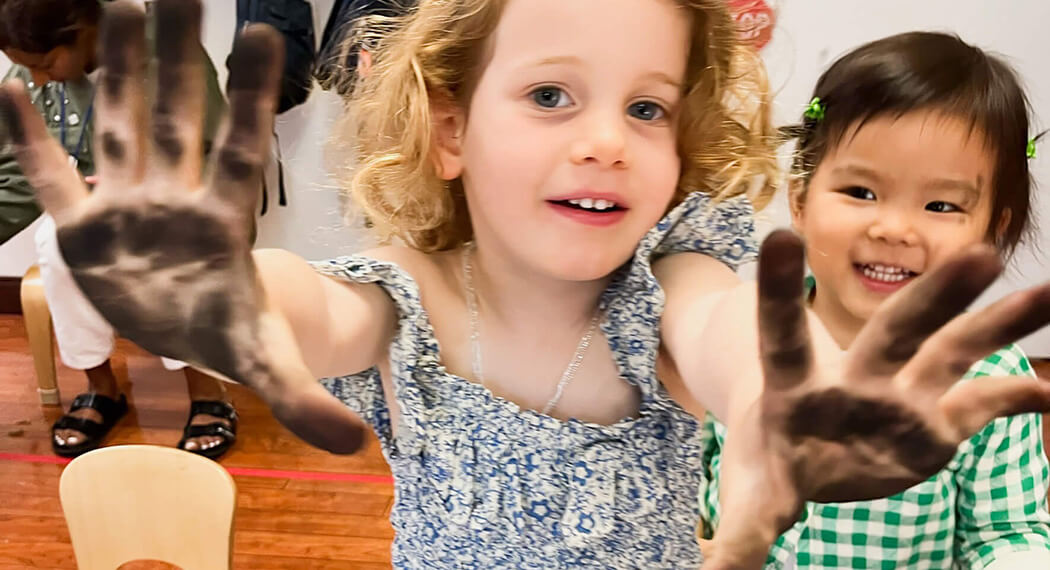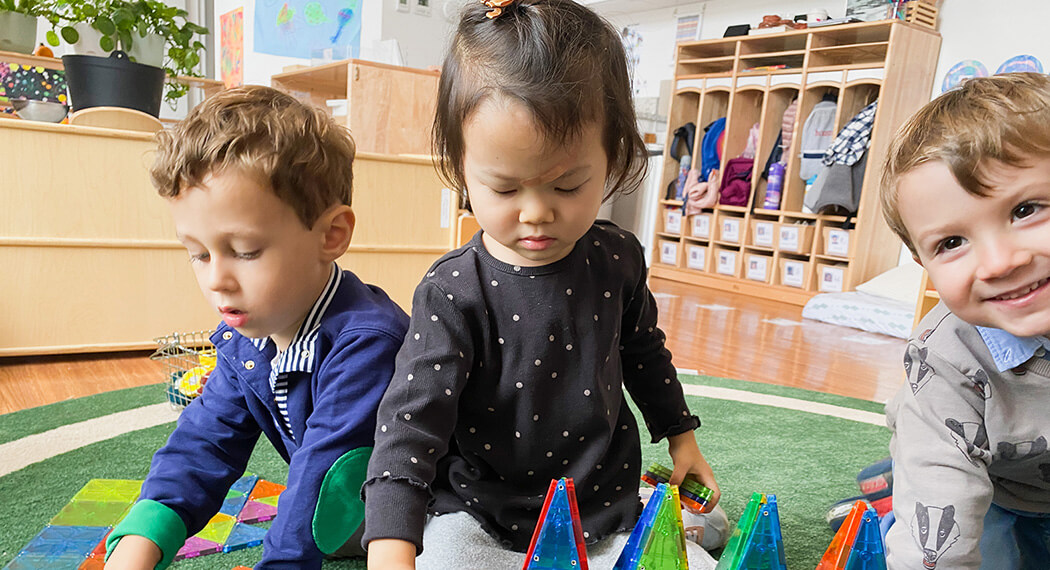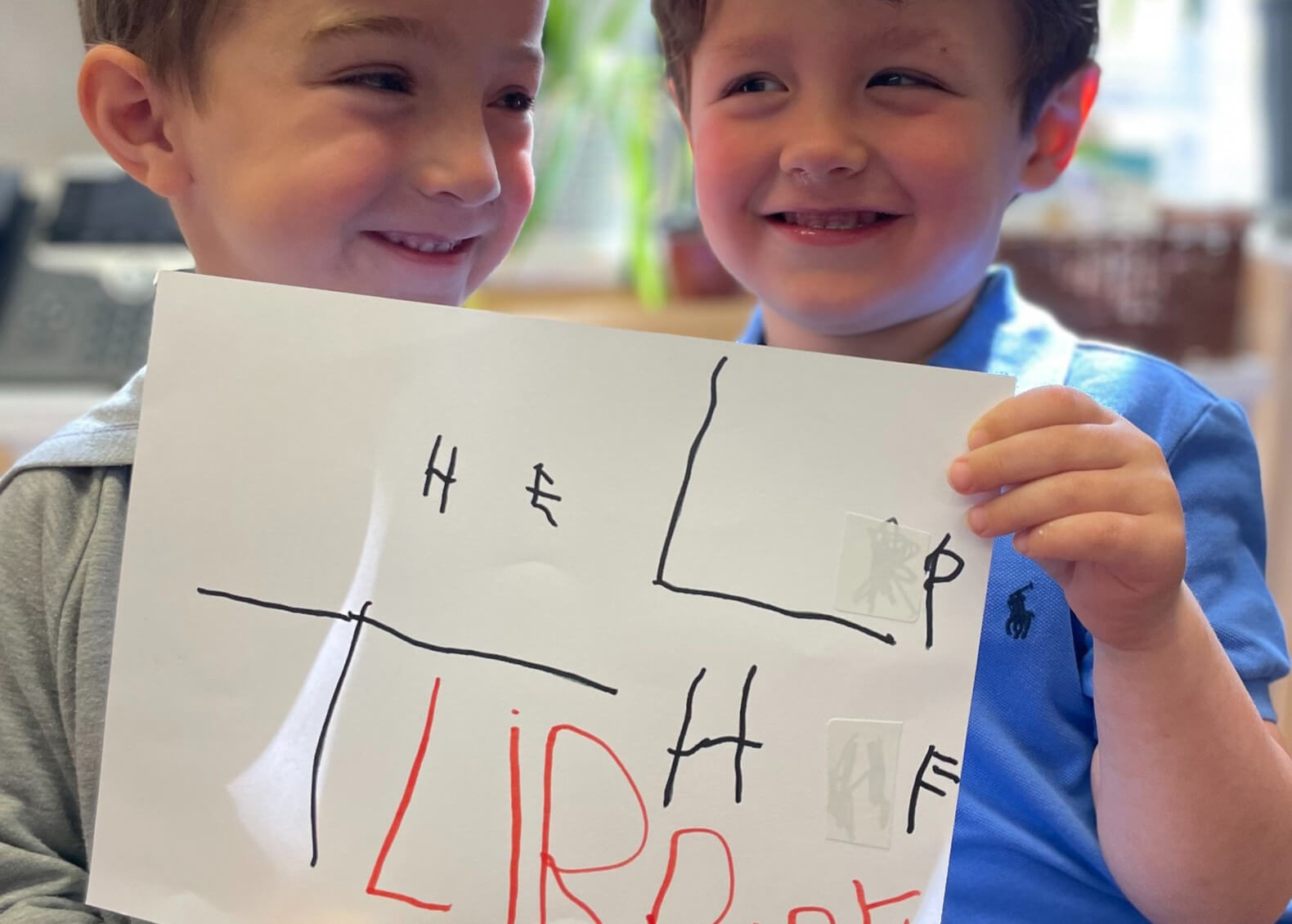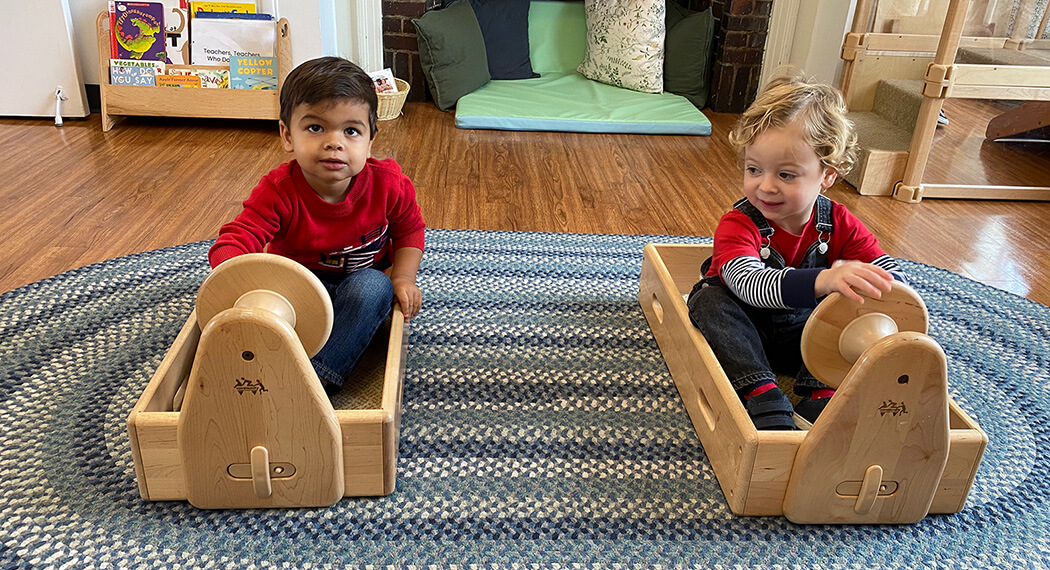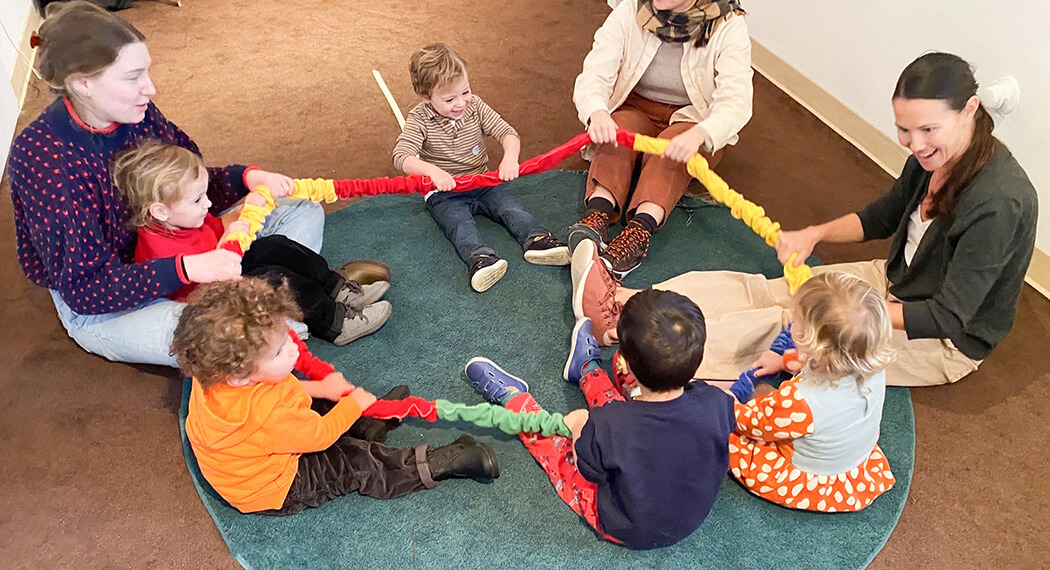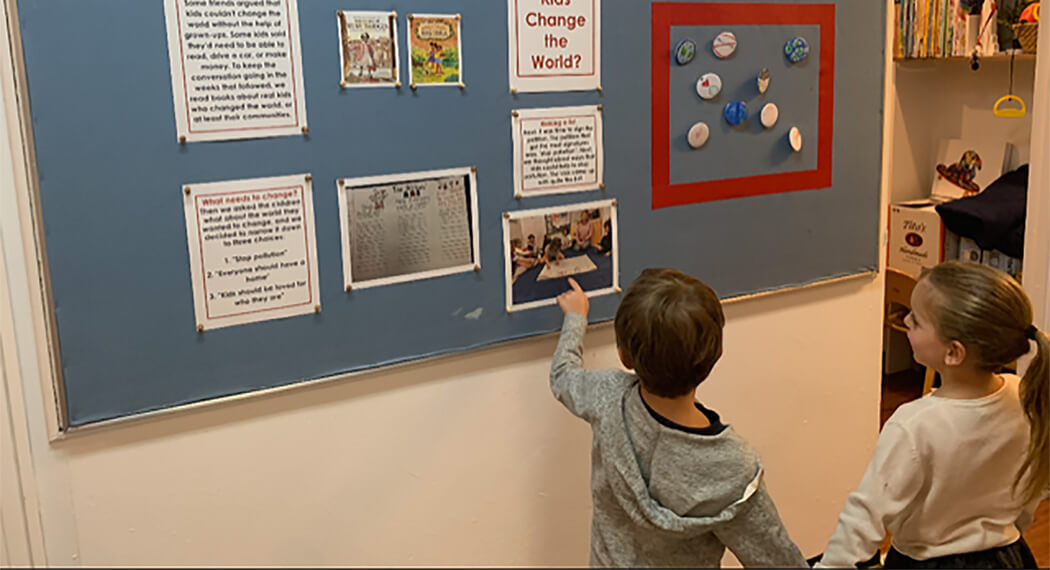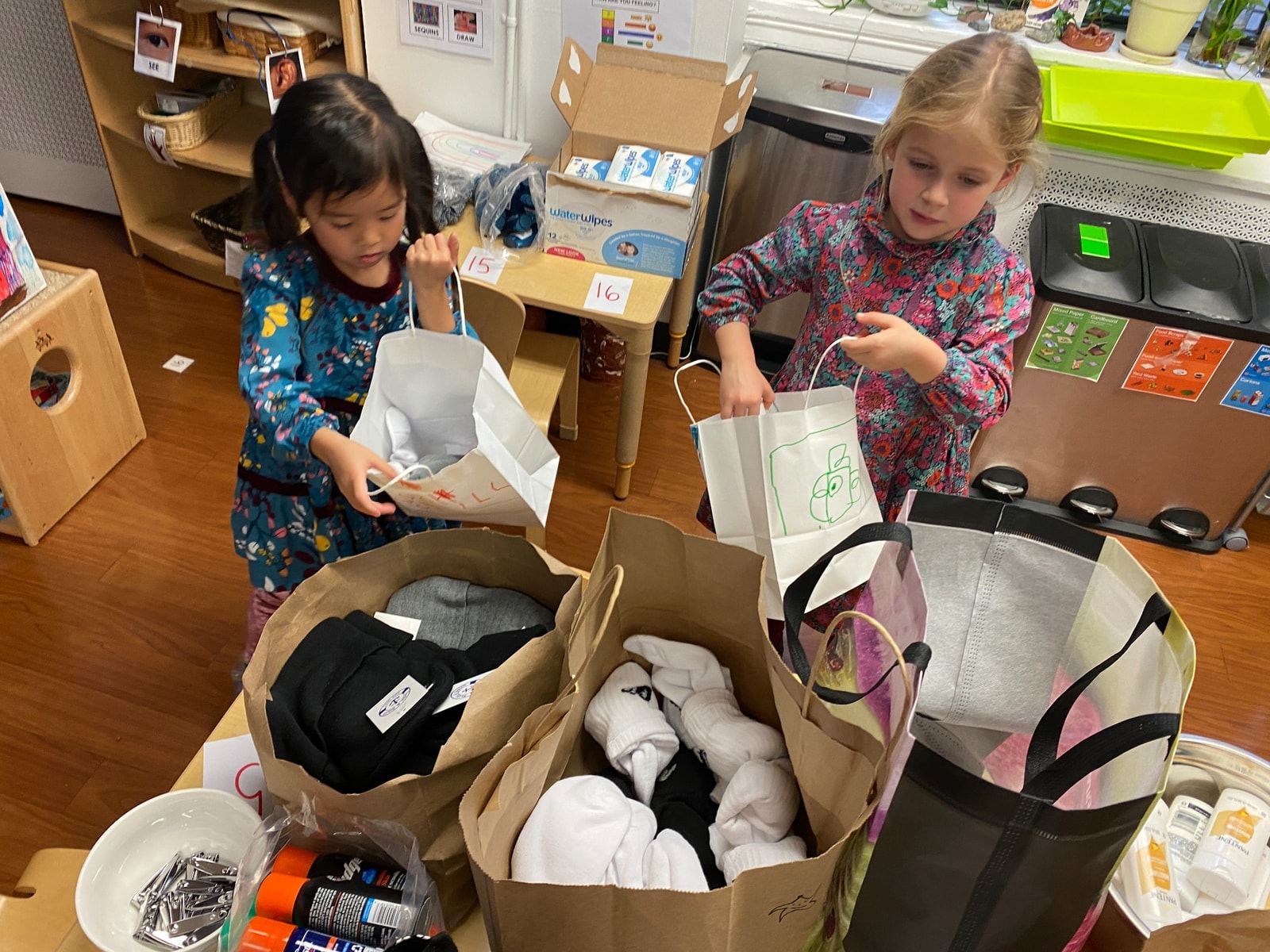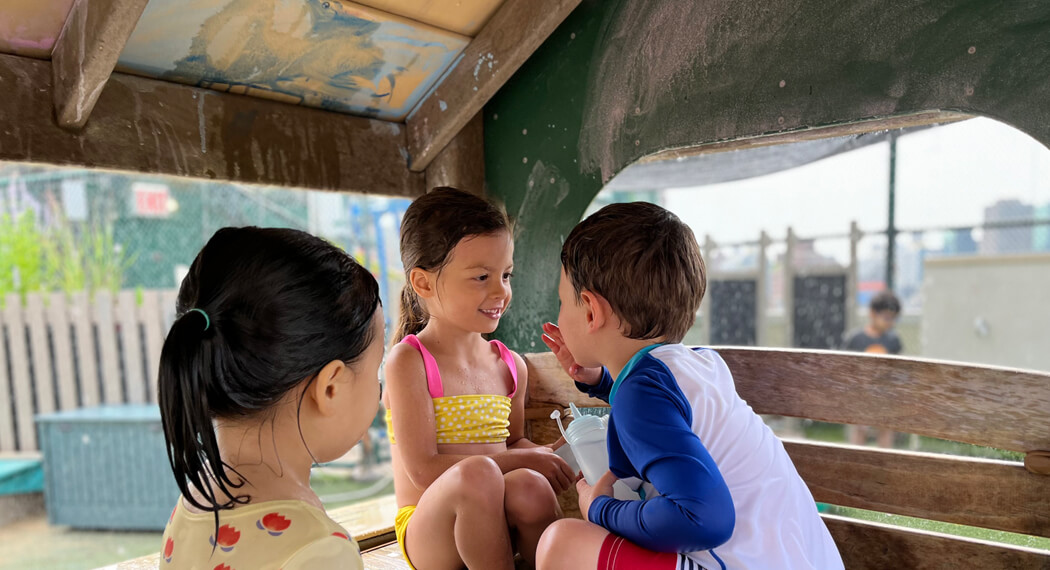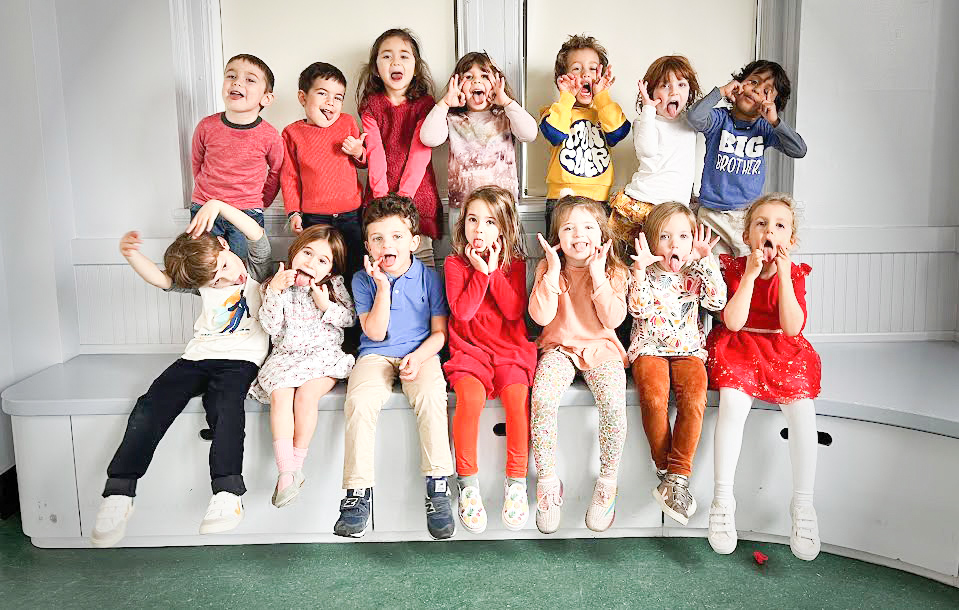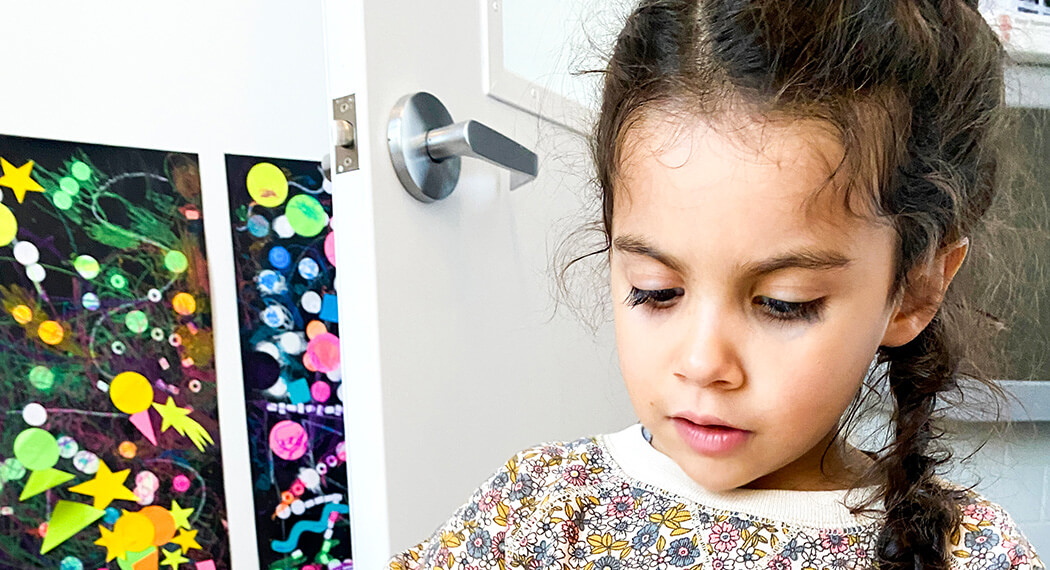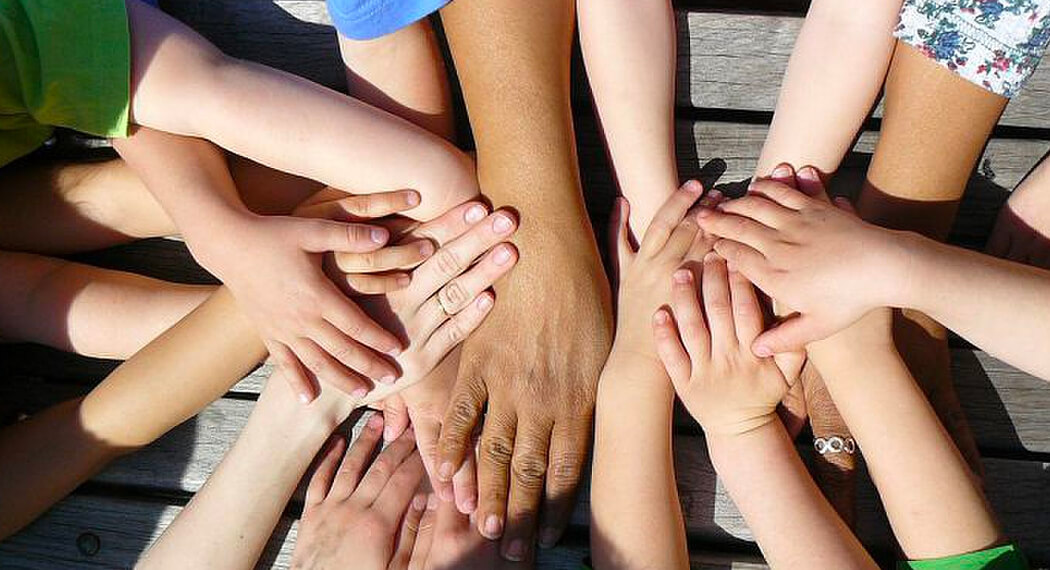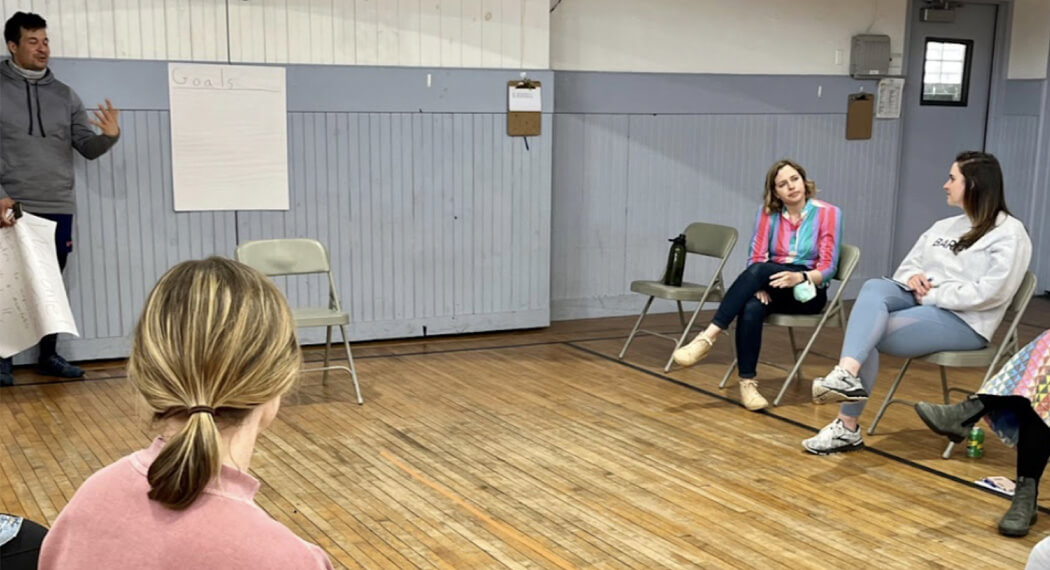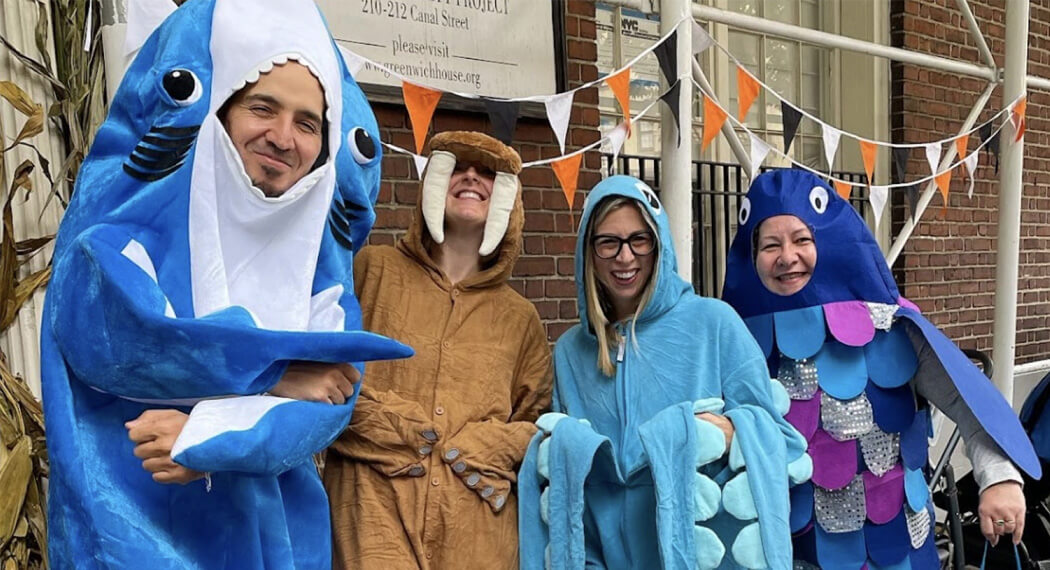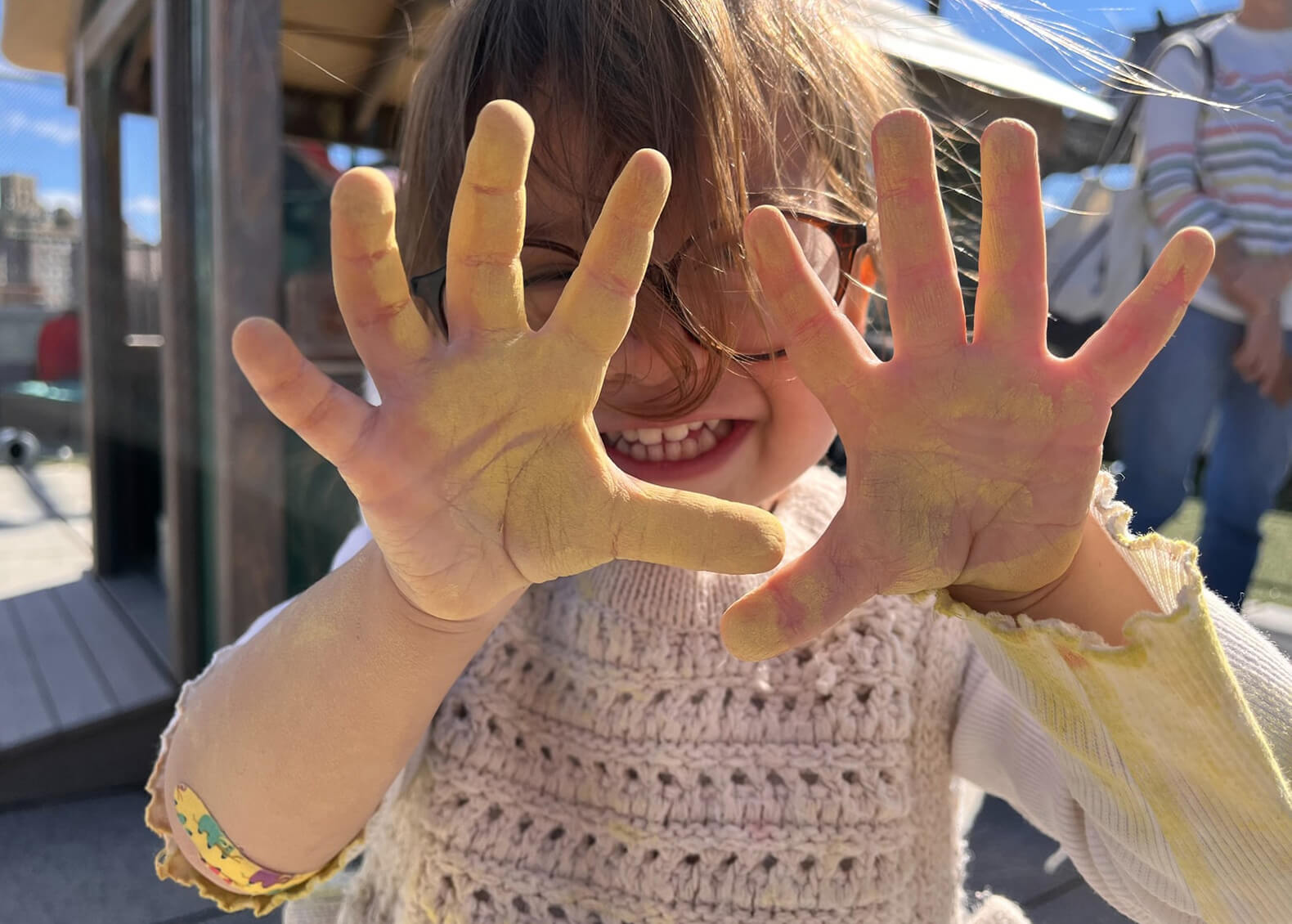How do hands communicate? Think of some words you might use to describe your hands. For my own I think of my work as an artist; my hands paint, mix, express, wrestle, despair, persist, and imagine. In my work as a curriculum specialist here at Barrow they reach, document, tell stories, help, hold, contain, and indicate. And, as a mother my hands embrace, remember, love, cherish, and organize. We all take on different roles and I invite you to consider the way you use your hands in these varied roles to articulate yourself. If *your* hands could speak, what would they say?
Let’s take a closer look at school wide documentation of hands collected this fall.
Considering the Developmental Domains through the Lens of Hands
LITERACY
Stories and storytelling are fundamental to every child’s literacy development. At Barrow Street children read stories every day and also have multiple avenues for writing or telling stories of their own.
While reading a story during meeting a child’s pointer finger directs the group to notice what she sees and to wonder together. This gesture shows the child’s understanding and brings the other children into the story in a way that supports the group’s comprehension too.
Later that day, the children worked with loose parts to tell their own stories. They used symbolic thinking to imagine rocks as characters, bottle caps as beds, and tile pieces as furniture. Activities like these support sequencing, making predictions, and creative problem solving.
MATHEMATICAL THINKING
Fingers are counting tools always at hand! During meeting in the Green Room Jonah and Kaitlyn use teamwork to show the number 13 by combining Jonah’s 10 fingers with 3 of Kaitlyn’s. This team teaching moment was prompted by that day’s “meeting helper” who was tasked with determining how many people were in meeting that day.
In order to complete this task, that student helper counted first on her own, and then tried again with teacher support. With gentle help and scaffolding the child was able to slow down and use mathematical strategies to count with one-to-one correspondence to find the correct sum.
The teachers made space for independent practice, trying again (woohoo growth mindset!), and for the group to count along on their own to check for understanding and practice together.
More info on one-to-one correspondence here: https://earlymath.erikson.edu/why-one-to-one-correspondence-math-matters/
FINE MOTOR
The skills and strength needed to learn to write legibly are developed within the context of play. In the Silver Room, children in the dramatic play area take orders while running a small cafe. When a pretend customer sits down the other children take turns scribing orders on small clipboards. At this age (3 and 4), the spectrum for what writing looks like varies from recognizable letters, experimental shapes, mimicking scrawls, and drawings.
On the same day in other areas of the classroom less obvious activities like beading, working with clay, manipulatives, and stickers provide equally important opportunities to practice fine motor. Offering these varied avenues into fine motor work ensures that every student practices with materials they feel invested in and motivated to persevere with.
ARTISTIC EXPRESSION
In art with Jim children learn to use painting tools with intention and purpose. This fall children worked on a single canvas that grew in vibrancy and sophistication with every color, texture, and layer added. Returning and revisiting a single project invites children to adopt a growth mindset, to reflect on their choices, and to express themselves.
In this single project children learned about color, texture, shape, line, patterning, and so much more. When I step into the art room now it almost glows as the voices of the children, spoken through the efforts of their hands, bounce light around the room. In looking at a single canvas I can see circles printed with towel rolls, lines scratched with forks, broad smears of paint made with thick brushes, handprints messily struck, colors mixed, images collaged, and finally, in a beautiful homage to Jim’s own artistic process, smooth textured drips on top.
Our bodies hold big ideas, emotions, and imaginative possibilities. Our our hands empower us to release those internal concepts and make them visible to ourselves and others.

